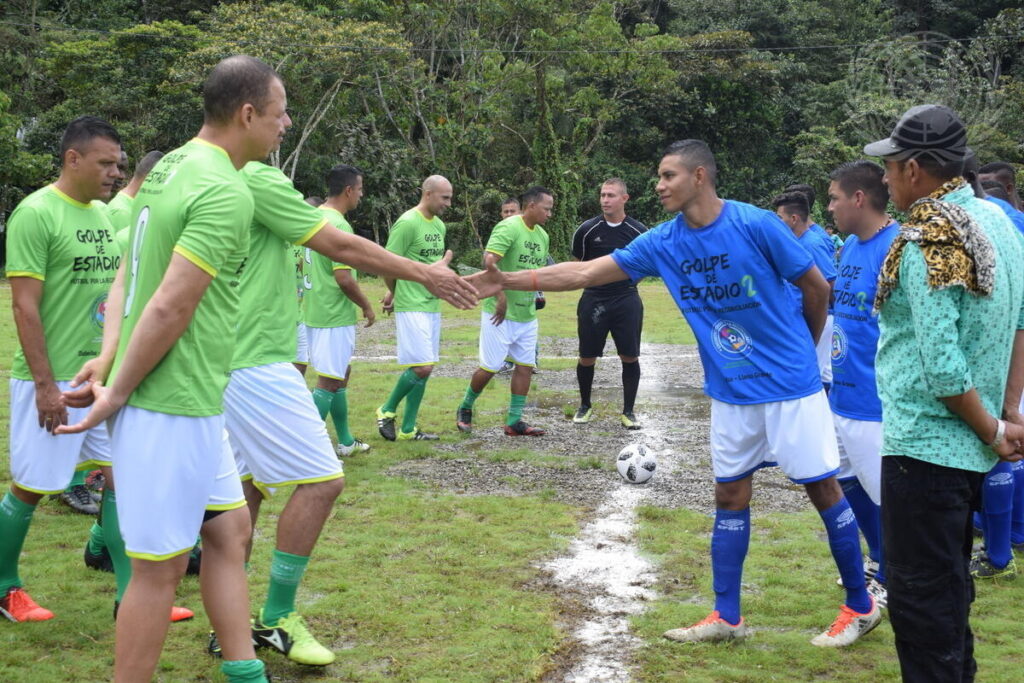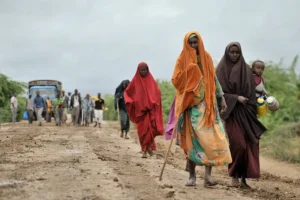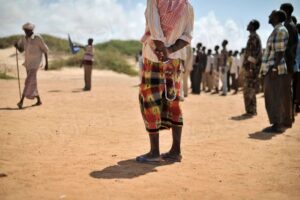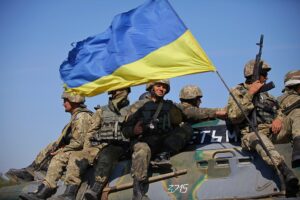Side Event Summary: 2022 UN Protection of Civilians Week
UN peace operations play a critical role in ensuring the safety and security of civilians in conflict zones, with 12 peacekeeping missions and 25 special political missions with a field presence currently deployed around the world. However, despite their crucial work, the impact of conflict on civilians continues to intensify. Local and regional armed conflicts have more than doubled since the early 2000s,1 Note: UN Security Council, “Protection of civilians in armed conflict: Report of the Secretary General,” S/2022/381, 10 May 2022, undocs.org/en/S/2022/381, para. 64. and 2021 alone witnessed at least 11,075 civilian deaths across 12 different armed conflicts.2 Note: Ibid., para. 6.
Within this context, large, multidimensional peacekeeping operations (PKOs) are trending downwards in number.3 Note: Since the last authorization of a new peacekeeping mission by the Security Council occurred in 2014, four peacekeeping missions have drawn down: UNOCI (in Côte d’Ivoire); MINUSTAH (in Haiti); UNMIL (in Liberia); and UNAMID (in Darfur). In its stead, the international community is increasingly favoring smaller civilian-led missions, such as special political missions (SPMs), that support dialogue and diplomacy during fragile political transitions. As the future of UN peace operations is considered, these trends invite renewed discourse regarding how the Security Council can work to enhance the protection of civilians (PoC) through different operation structures and mandates.
On Tuesday May 24th, 2022, PAX and the Stimson Center, in partnership with the Permanent Missions of Australia, Rwanda, and the United States of America to the United Nations and the Office of the High Commissioner for Human Rights (OHCHR), hosted over 50 participants in New York for an expert-level workshop. The event highlighted innovations, good practices and lessons learned on PoC in PKOs with small footprints and SPMs. Featured speakers included representatives from peace operations, UN headquarters (HQ), member states—including Security Council members, host-states, and troop- and police-contributing countries (T/PCCs), and civil society organizations. Under the Chatham House rule of non-attribution, participants discussed how to move towards a more comprehensive understanding of protection, how to strengthen PoC mandates and activities, and how to successfully draw on partnerships to create sustainable peace. This note provides a summary of the discussion, though it may not represent the views of the hosts or others present.
This event took place on the sidelines of the UN Security Council’s 2022 Annual Open Debate on PoC. Member states participating in the Open Debate condemned the rise of deliberate attacks on civilians and civilian infrastructure in conflict areas,4 Note: UN Security Council, “Protection of civilians in armed conflict: Report of the Secretary General,” para. 5, 8, 9, 11, 12, 22, 81. For a list of internationally protected groups and infrastructure see, International Committee of the Red Cross, “Persons protected under ILH,” 29 October 2010, https://www.icrc.org/en/document/persons-protected-ihl. reflecting the need for PoC to remain at the heart of the Security Council’s work. Further, the 2022 Secretary-General Report on the Protection of Civilians in Armed Conflict found that those most at risk of being targeted include women, girls, and children; medical workers; journalists; and persons with disabilities. This upward trend in violence is compounded by the increase of conflict-driven food insecurity, environmental damage, and forced displacement and disappearances,5 Note: UN Security Council, “Protection of civilians in armed conflict: Report of the Secretary General.” challenges that peace operations must increasingly navigate in mission environments.
Roundtable Takeaways and Interventions
Challenging Contexts
From the outset of the workshop, participants emphasized the increasingly complex nature of the environments in which peace operations carry out their mandates. It was noted that while UN member states agree on the primary need to protect civilians in these contexts, diverse viewpoints on the nature of threats and how they should be addressed can preclude the direct inclusion of protection-related activities in mission mandates. Where the mandate allows, peace operations can protect civilians through dialogue and peacebuilding; monitoring and reporting on the political process; uniformed patrolling by peacekeeping missions; assistance with security sector reform and strengthening the rule of law; and promotion of human rights and gender equality.
Participants noted a variety of reasons that peace operations may struggle with mandate implementation, such as risks to the safety and security of personnel, poor performance, reduced host-state cooperation, insufficient communication with local actors, lack of resources, and/or minimal capacity. Ongoing threats to civilians mentioned include intercommunal conflict and attacks targeting civilians, food insecurity, the denial of public services, blockage of humanitarian aid, and sexual- and gender-based violence (SGBV). Given these risks, it was broadly agreed that peace operations should prioritize addressing both the causes and consequences of conflict.
With the UN Security Council less likely to deploy large multidimensional missions in the future, participants discussed how PoC efforts could be undertaken by diverse types of peace operations, including by PKOs with a smaller footprint and SPMs, if and as mandated. While PoC remains the foremost responsibility of the host-state, ongoing and emerging threats necessitate a holistic response by UN actors, meriting consideration of how to further expand and broaden PoC approaches. In doing so, most agreed that creative solutions and effective coordination among actors on the ground are essential.
Good Practices and Lessons Learned
For both PKOs and SPMs, participants highlighted the continued importance of the primacy of politics. In a few instances, peacekeeping missions remain disconnected from the political process, limiting their potential contributions to long-term peace and security. While host-states may be more comfortable with a security-focused operation, several participants acknowledged that missions will be most successful when they also have a mandate to support the political process. Despite this challenge, in the case of the UN Interim Force in Lebanon (UNIFIL), a tri-partite military dialogue mechanism between Lebanon and Israel allows for de-confliction, confidence building and relationship restoration, preventing the potential escalation of conflict.
Participants discussed the comparative advantages of different types of missions, with a few suggesting that smaller PKOs and SPMs may be well placed to focus on conflict prevention and deterrence activities (as compared to responding to emerging crises and violent conflict). Within missions, human rights sections play an important role in safeguarding the rights and safety of civilians. Their work can contribute to PoC through the monitoring of early warning indicators, investigation of violations, and reporting and tracking of civilian harm. Human rights activities can also inform political dialogue and peacebuilding activities, as well as help establish a protective environment, such as through assistance with legislative, judicial, and security sector reform.
Participants suggested that creating effective accountability mechanisms can be another way to deter human rights violations. Such mechanisms have been set up in Somalia through the coordinated efforts of the UN Support Office in Somalia (UNSOS), UN Assistance Mission in Somali (UNSOM) and African Transition Mission in Somalia (ATMIS), and in Iraq with the support of the UN Assistance Mission in Iraq (UNAMI). As one participant stated, “protecting human rights today contributes to preventing the risks of conflict for tomorrow.”
In discussing the establishment of protective environments, the important role of women peacekeepers and the complementary nature of the Women, Peace and Security agenda was emphasized. In Abyei, for instance, the UN Interim Security Force for Abyei (UNISFA) is facilitating dialogue among traditional leaders, religious leaders, youth and women on customary laws that are restrictive to women — and in the process, supporting and empowering women to advocate for their rights.
Participants also stressed the importance of investing in local capacity to help create peaceful and stable environments. Utilizing community liaison assistants (CLAs) and investing in quick impact projects (QIPs) were widely cited as good practices. QIPs can focus on immediate impact through the building of critical infrastructure (e.g., roads, hospitals, schools), as well as strengthen the long-term capacity of host-communities through technical training and development. They can additionally help the mission build trust with local communities, by signaling that their voices and needs are being heard.
Overall, strategies for strengthening PoC can be better identified when PKOs and SPMs further explore the interlinkages between their mandated tasks. UNSOS and UNSOM were offered as examples of how a SPM can support the protection of civilians in the absence of a PoC mandate. When viewed collectively, UNSOM’s mandated tasks (e.g., support to political and electoral processes, technical assistance with security sector developments, and monitoring and reporting on human rights) help advance a protective environment for civilians.
Local Engagement & Partnerships
Engaging host-state(s) and host-communities in PoC is essential for smaller peace operations, given limited resources, capacity, and challenges inherent to the context. Participants shared when PKOs face restrictions of movement or low cooperation from host-country interlocutors, missions must find creative ways to either engage the relevant actor in identifying a solution or find an alternative work-around. In the case of Abyei, which has no local police force, UNISFA police train and mentor members of the local community in unarmed protection, leading to the development of a Civilian Protection Committee and 34 stations.6 Note: UN Security Council, “Situation in Abyei: Report of the Secretary-General,” S/2022/316, April 14, 2022, undocs.org/en/S/2022/316, para. 41. The importance of including community leaders from different parts of the area in the Civilian Protection Committee was further emphasized as necessary for preventing conflict, enforcing the rule of law, and overseeing PoC.
Domestic civil society organizations can also serve as reliable and ready partners, with their long-term presence and connection to local communities a huge advantage. Unarmed community self-protection was a significant point of discussion, with some participants advancing that unarmed approaches to PoC can result in activities that are more tailored to local communities, cost-effective, and sustainable. Locally led PoC mechanisms could either be supported by a UN peace operation, as in the case of the peacekeeping operation in Abyei, or by expert civil society organizations, as in the case of Nonviolent Peaceforce. Following training, civil society organizations could address their community’s protection needs through physical accompaniment, creating early warning networks, facilitating or supporting inclusive dialogue processes, establishing confidence building measures, or activities that strengthen intercommunal bonds.
Participants also suggested that missions should routinely collaborate and de-conflict their activities with international humanitarian and peacebuilding actors, the UN country team, and UN agencies present (e.g., WFP, UN Women, UNICEF). These actors are often present before the arrival of the mission and can serve as helpful advocates, liaisons and supporters of PKOs and SPMs. And while coordination should remain ongoing throughout the lifespan of a mission, it is paramount during transitions. Participants emphasized the need for further analysis and tools to inform conversations before, during and after transitions on addressing short- and long-term threats.
Looking Ahead
Going forward, the UN should continue to explore what PoC could look like when undertaken by diverse types of peace operations. The roundtable demonstrated a clear appetite for deeper engagement on PoC outside of traditional force protection, including as it relates to community engagement and unarmed protection approaches. Participants called for a holistic approach to PoC, enhanced coordination among UN actors in peace operation contexts, and creative thinking on how PKOs and SPMs can further contribute to PoC. Existing tools, such as the 2015 High-level Panel on Peace Operation (HIPPO) Report,7 Note: See UN General Assembly and Security Council, “Report of the High-Level Independent Panel on Peace Operations on uniting our strengths for peace: politics, partnership and people,” A/70/95 – S/2015/446, 17 June 2015, undocs.org/en/S/2015/446. the Kigali Principles on the Protections of Civilians,8 Note: International Conference on the Protection of Civilians, “The Kigali Principles on the Protection of Civilians,” 2015, http://civilianprotection.rw/wp-content/uploads/2015/09/REPORT_PoC_conference_Long-version.pdf. and 2021-2023 Action for Peacekeeping priorities9 Note: UN Department of Peace Operations, “A4P+ Strategic Priorities for 2021-2023,” 2021, https://peacekeeping.un.org/sites/default/files/a4p_background_paper.pdf. remain of high relevance. New initiatives, including Our Common Agenda and the forthcoming Agenda for Peace and Agenda for Protection, will also be essential in guiding how peace operations can further protect civilians amidst a changing world.
Acknowledgements
This event was co-organized by PAX and the Stimson Center’s Protecting Civilians and Human Security Program, in partnership with the Permanent Missions of Australia, Rwanda, and the United States of America to the United Nations and the Office of the High Commissioner for Human Rights (OHCHR). The workshop organizers express their gratitude to all organizers of the 2022 PoC Week, with special thanks to the Permanent Mission of Switzerland to the United Nations, the Office for the Coordination of Humanitarian Affairs (OCHA), the Center for Civilians in Conflict (CIVIC), and the International Rescue Committee (IRC).
This summary was written by the Stimson Center’s Protecting Civilians and Human Security Program, with thanks to Shakiba Mashayekhi, Scoville Fellow, and Julie Gregory, Research Analyst. It is not necessarily reflective of the views of the hosts.
Photo: Former combatants of the FARC-EP (Revolutionary Armed Forces of Colombia—People’s Army) and members of the Colombian Armed Forces play a friendly game of soccer in 2018, along with other residents of the village of Dabeiba in the Department of Antioquia. The match was hosted by the UN Verification Mission in Colombia as part of its Football for Peace and Reconciliation initiative. Credit: UN Photo/Jennifer Moreno Canizales.

Notes
- 1Note: UN Security Council, “Protection of civilians in armed conflict: Report of the Secretary General,” S/2022/381, 10 May 2022, undocs.org/en/S/2022/381, para. 64.
- 2Note: Ibid., para. 6.
- 3Note: Since the last authorization of a new peacekeeping mission by the Security Council occurred in 2014, four peacekeeping missions have drawn down: UNOCI (in Côte d’Ivoire); MINUSTAH (in Haiti); UNMIL (in Liberia); and UNAMID (in Darfur).
- 4Note: UN Security Council, “Protection of civilians in armed conflict: Report of the Secretary General,” para. 5, 8, 9, 11, 12, 22, 81. For a list of internationally protected groups and infrastructure see, International Committee of the Red Cross, “Persons protected under ILH,” 29 October 2010, https://www.icrc.org/en/document/persons-protected-ihl.
- 5Note: UN Security Council, “Protection of civilians in armed conflict: Report of the Secretary General.”
- 6Note: UN Security Council, “Situation in Abyei: Report of the Secretary-General,” S/2022/316, April 14, 2022, undocs.org/en/S/2022/316, para. 41.
- 7Note: See UN General Assembly and Security Council, “Report of the High-Level Independent Panel on Peace Operations on uniting our strengths for peace: politics, partnership and people,” A/70/95 – S/2015/446, 17 June 2015, undocs.org/en/S/2015/446.
- 8Note: International Conference on the Protection of Civilians, “The Kigali Principles on the Protection of Civilians,” 2015, http://civilianprotection.rw/wp-content/uploads/2015/09/REPORT_PoC_conference_Long-version.pdf.
- 9Note: UN Department of Peace Operations, “A4P+ Strategic Priorities for 2021-2023,” 2021, https://peacekeeping.un.org/sites/default/files/a4p_background_paper.pdf.




